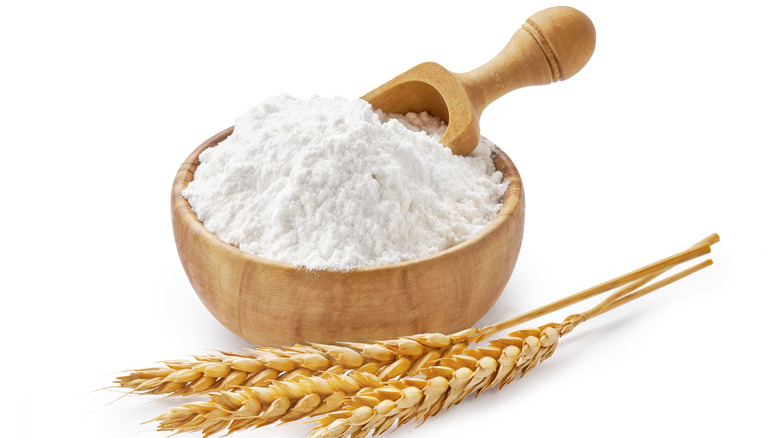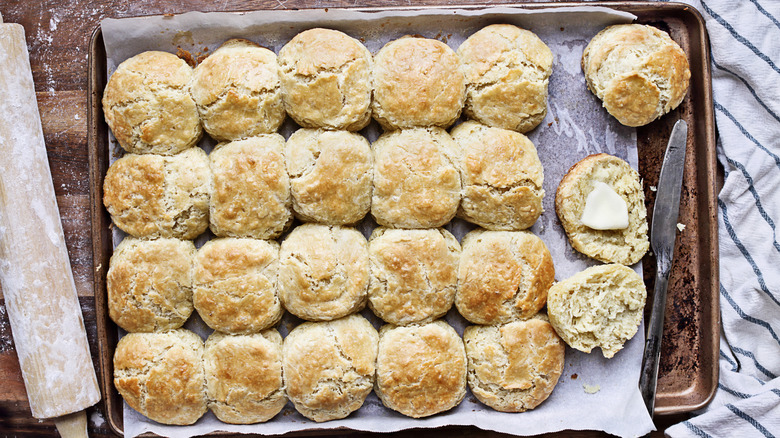Is White Whole Grain Bread Good For You?
A walk down the bread aisle of any average-sized grocery store can be a confusing, if not overwhelming, experience. For someone trying to choose a healthy loaf of bread, the mix of terms used on the label — 'whole grain,' 'whole wheat,' 'cracked wheat,' 'multigrain,' and more, is enough to leave you scratching your head. There's another ingredient to be on the lookout for now that's growing in popularity — white whole wheat.
Sure, it seems like a contradictory term. We've long been told to avoid anything white when it comes to grains — whether it be flour or rice. And on the other hand, dietitians have long taught us that 'whole' = healthy. So, 'white whole wheat'? What gives?
White whole wheat flour is actually milled from the whole wheat grain, meaning that it includes all three nutritious parts of the wheat kernel — the germ, bran, and endosperm (via King Arthur Baking Company). The germ and endosperm contain important vitamins, minerals, and fiber. These are removed to produce refined white flour, which is milled from the endosperm only. White whole wheat flour is therefore much more nutritious than white all-purpose flour, and is considered nutritionally on par with regular whole wheat flour.
White whole wheat can replace all-purpose flour in recipes
White whole wheat is a naturally-occurring albino variety of wheat, which lacks the genes that give the bran portion of red wheat its characteristic dark color. Along with the lighter bran color, white whole wheat also has a milder taste and gives a lighter texture to baked goods, making it an excellent substitute for all-purpose flour (via The Whole Grains Council).
We all know that getting enough whole grains in our diet is good for our health. Vandana Sheth, a spokesperson for the Academy of Nutrition and Dietetics says, "Studies have shown that when we eat whole grains, we're lowering our risk for many chronic conditions. Some studies show a benefit by including even just one whole grain serving per day, but those benefits are significantly enhanced when we eat at least three servings a day. The bottom line is to increase the intake as much as possible," she says (via Today's Dietitian).
Overall, white whole wheat is an excellent option for those who are looking to increase their intake of whole grains, but who also enjoy the taste and texture of goods made with white flour.


